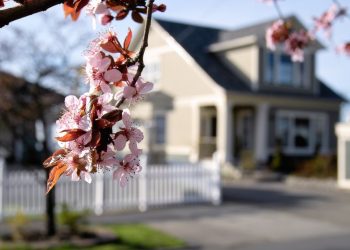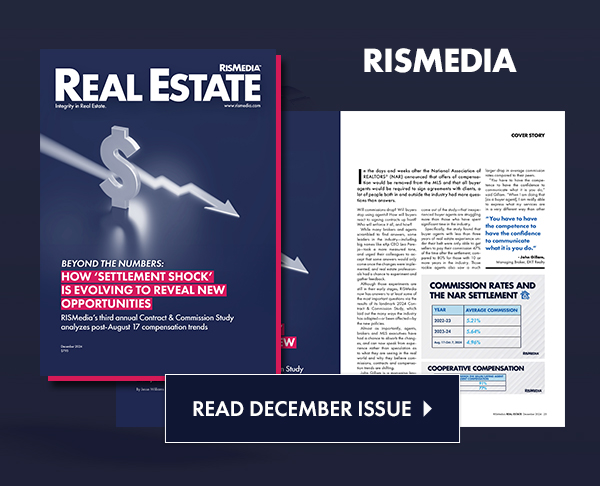Florida is the boating and fishing capital of the U.S. It’s also home to white sandy beaches, palm trees swaying in the wind and golf courses by the dozen. In 2019, the state’s economist estimated that more than 900 new residents each day took advantage of the beautiful weather and affordable lifestyle. That was before COVID-19 drastically changed the way we live, work and play.
Now, Florida is proving to be even more attractive. In fact, Lawrence Yun, chief economist for The National Association of REALTORS® (NAR), predicts that more remote workers could flock to Florida, where the cost of living is low, and there’s no state income tax. While Florida’s beautiful weather, theme parks and beaches are attractive, hurricane season is already underway…and lasts through November. This year, the research team at Colorado State University predicts 20 named storms for an active season. If you’re interested in buying a home in the Sunshine State, here are five things to know before a major storm is in the forecast:
When was the house was built?
When Hurricane Andrew decimated South Florida in 1992 as a Category 5 storm, it caused the state’s worst insurance crisis in history. Whole neighborhoods were flattened and investigations were launched into construction practices at the time.
The damage revealed significant deficiencies in both building codes and enforcement, leading to a new set of statewide standards in 2002. However, just two years later, Hurricane Charley leveled Punta Gorda when it made landfall, which led to the discovery that 90 percent of the mobile homes destroyed were not up to code.
That’s why buyers must check when the house was built. The Florida Building Code, updated every three years, has dozens of chapters governing specific details like the number of nails in the roof and sloping requirements. Homes built since the statewide code took effect must meet the state’s strict standards, and if applicable, other restrictions set in place by local governments.
A licensed inspector will be well-versed in the requirements necessary to minimize damage from a powerful hurricane. The age of the home can help buyers ask the right questions before moving forward, since any home built prior to the current Florida Building Code may raise some concerns to buyers.
How old is the roof?
The age of the roof is a concern no matter where you buy a home, but in Florida, the older the roof, the better the chance it has been exposed to severe weather conditions. While a standard shingle roof should last 15 to 20 years, and a concrete or tile roof anywhere from 40 to 50 years, that does not take into account years of tropical storms and hurricanes battering the state.
In 2017, Hurricane Irma shredded roofs throughout Central Florida. Some homeowners had leaks, while others had shingles stripped off the roof entirely. While it took months, and even years, for roofers to replace roofs throughout the region, contractors warned of the damage that was not visible to the untrained eye.
If a home inspection raises questions about the age of the roof, the cost of a replacement must be taken into consideration for the buyer.
Take a close look at the windows.
There’s been a bigger focus on windows over the last few years as a way of saving on energy costs. In Florida, the intense sun is not all buyers have to worry about though. Hurricane Andrew exposed how windows can carry wind-blown objects straight into the home. Florida Building Code requires windows to be impact-resistant or protected if located within a mile of the state’s scenic coastlines. While storm shutters are not required in most areas, they can help reduce insurance costs.
The age of the windows is also important. Buyers should take a close look to make sure there are no breaks in the caulking or the seal. If there are, there will be an added cost to repair or replace the windows to ensure they offer better protection during a storm.
Evaluate your insurance needs.
A little research can go a long way when it comes to insurance needs. This is an annual expense that must be considered when it comes to buying a home in Florida. Most insurance policies for primary residences in Florida include hurricane coverage, with some exceptions. Buyers should know that deductibles are either calculated at a flat rate or by a percentage of the dwelling’s appraised value. So, if the house’s appraised value increases, it’s important for buyers to beware that their hurricane deductible will, too.
While homeowners insurance will cover water damage from a broken pipe, it typically won’t cover flooding damage from a hurricane. This is where research comes in handy. If buyers are interested in a specific area, they should look into the Federal Emergency Management Agency’s (FEMA) flood zone maps. Storm surge maps are critical for buyers interested in coastal living. Past news coverage can also help pinpoint trouble spots.
Consider annual maintenance costs.
Just like winter in the Northeast, preparations must be made for hurricane season in Florida. Annual maintenance does include some costs that should be taken into consideration.
One annual item to check off the list is tree trimming. Even during a typical Florida summer afternoon, a strong thunderstorm can send a large tree branch crashing into a home. Gutters must also be cleared before a hurricane in order to clear them of any blockages to allow rain to flow freely. With all of the wind, debris can easily collect in gutters during the storm.
Buyers should also assess whether prospective homes already come with a generator, which can cost thousands of dollars. Floridians are no strangers to waiting weeks for power restoration. In order to keep that generator running, gasoline or liquid propane must be purchased.
When it comes to living in Florida, preparation is key. While the Sunshine State has, at times, gone years without hurricanes making landfall, the risk always looms. Local REALTORS® who have lived through storms, both catastrophic and near misses, are well-versed in the needs to keep buyers and their families safe. Whether it comes to inspecting the windows or hiring the right inspector, consulting a REALTOR® is one way to get ahead of the storm, before it hits.
Reese Stewart, RE/MAX Properties SW, is the 2020 president of the Orlando Regional REALTOR® Association (ORRA). ORRA represents 15,500 real estate professionals throughout Central Florida and is currently the 7th largest REALTOR® Association in the United States.
This article first appeared on RISMedia’s blog, Housecall.











